On Saturday this weekend, my wife – who is a Ukrainian – and I travelled to the town of Kolomyya/ Kolomyja/ Kolomyia/ Kolomea/ Коломия. (With the regular changes to official transliteration methods, it’s not clear what the correct form should be in English). The town is around 60 km from Ivano-Frankivsk and is home to some great tourist attractions and also my wife’s grandmother, which was our reason for travelling.
Among the attractions is the Easter Egg (Pysanka) Museum (above), which has a huge collection of traditional Ukrainian painted Easter eggs, as well as examples from around the world. There is also the astounding Museum of Hutsul Folk Art, behind the Easter Egg Museum, and a short way off the main street, the town’s History Museum, offering a very insightful history of the town. Kolomyya has around 65,000 residents, making it the third biggest town in the Ivano-Frankivsk region after the capital and Kalush. Kolomyya, apart from having museums arguably superior to Ivano-Frankivsk, is a useful transport hub for getting you into some more obscure corners of the Carpathian Mountains or it makes a neat stop off along the way to Chernivtsi. Anyway, the tourist guide bit of this post is done.
Now I will focus on giving a sense of the atmosphere in the town and what can be judged from observing the urban space about attitudes to the recent events, including the Revolution.
This is outside the town’s History Museum. The plaque to nationalist leader Roman Shukhevych, complete with UPA emblem and the ‘Glory to Ukraine/ Glory to the Heroes’ slogan, is admittedly larger than the museum’s own name plate, but this kind of imagery is – after months in Ivano-Frankivsk – unusually rare in Kolomyya.
Saturday felt like an ordinary day, no different from any other visit to Kolomyya. We arrived by bus from Ivano-Frankivsk, a typically overcrowded bus which was designed for maybe 40 people at most, including standees, but managed to carry 60 or more at one point. It was market day in town, with the main market heaving while the central street, Chornovola, was full of people trading cheese, fruit, flowers and other things. The cafes seemed fairly full as we passed them.
What was most striking the difference to Ivano-Frankivsk’s urban space which, as far as informal notices and such like around the city, is dominated by nationalist imagery, including the adverts for joining paramilitary organisations like UNSO or the stickers placed over municipal institutions supporting Right Sector (Правий Сектор), not to mention marches by that grouping and even more extremist associates.
In Kolomyya, we covered the entire town centre and some suburbs by foot and noticed very little nationalist imagery, slogans, stickers or colours. Instead, the EU flag and the original objectives of the early civil revolution of November and December 2013 seemed more evident. The Easter Egg museum, like the nearby Pysanka Hotel, flew the flag alongside the Ukrainian one.
The Town Hall, which also doubles as the centre of the town’s revolutionary resistance committee, does not feature a single red-and-black flag. Instead, the flags of Ukraine, the EU and the Ukrainian Navy fly side by side, below the town’s crest.
On the balcony by the flags there remains a plaque to Polish-Lithuanian revolutionary and freedom fighter (who is also an American hero), Tadeusz Kosciuszko. He was a leader in the 1794 Uprising which sought to defend Poland’s 3 May 1791 constitution and Poland’s sovereignty against encroaching Prussian, Austrian and Russian empires. Given the circumstances facing Ukraine, it seems apt that a trace of Kosciuszko remains in the town.
Generally, though, the extent to which the past of other communities once significant in western Ukraine is remembered is a contentious issue and best left for another time. No doubt any deepening of Ukraine’s relations with Europe will lead to the questions of the Polish and Jewish past in the region being examined more closely. (Back to tour guide mode: Kolomyya is also an important site for Jewish history, with one of the town’s synagogues remaining.)
Below the Kosciuszko plaque, there is another, this time commemorating Ivan Franko, the man in whose honour Stanislaviv was renamed Ivano-Frankivsk in 1962. Kolomyya probably has a better claim to being named after him, since he was imprisoned here in 1880, as the plaque notes, while he also spent a fair amount of time having his syphilis treated. (I’d have got a photo of the clinic, but it’s a bit out of the centre, on the way to the train station.) It seems apt that two democratic revolutionaries are honoured on this one building which is now the headquarters of the national resistance committee.
Here the symbolism is dominated by the colours of the Ukrainian national flag, with the local crest (the eagle) prevalent alongside the Ukrainian trident within the circle of the EU starts. I can’t recall seeing this imagery in Ivano-Frankivsk for a long time, apart from on the beanie hat of a small boy who was travelling on the same bus to Kolomyya in the morning. While the entrance to Ivano-Frankivsk’s administration building is covered in Right Sector stickers and paramilitary recruitment posters, Kolomyya’s is free of any such imagery. Even the small poster remembering the first Maidan dead is restrained and sombre, avoiding any nationalist symbolism.
Indeed, even local shops – and not just this one – are proud to fly the EU flag, with this banner saying ‘Ukraine is Europe. Your contribution is important.’ This remains an echo of what seems to be, in the urban of space of Ivano-Frankivsk, largely forgotten, namely Euromaidan – the civil movement towards a European Ukraine.
The only red-and-black nationalist UPA flag we saw flying in the city was outside this shop, Euro Second Hand. So even this shop has some connection to the European ideal, this time reflected in cheap clothes – seconds, second hand or sales items – imported to Ukraine and sold at affordable prices.
The only Right Sector sticker we could locate in the town was – not unsurprisingly – on the memorial to the Maidan dead constructed on the city’s Rally Square opposite the town hall tower. While Right Sector had left a tasteful wreath, their representatives also decided that it would be worth putting at the top of the this memorial the group’s familiar sticker of a balaclava-wearing man.
Seeing as no one from Right Sector was killed on Maidan, I interpret this as further evidence of the organisation attempting to appropriate the Maidan dead for its own cause of national revolution.
Nearby there was also some kind of rock monument, perhaps symbolic of a Ukrainian grave-mound (могила) constructed in villages and towns to mark those killed in war, uprising and revolution. It is not clear what the pile of rocks in the town centre is supposed to signify, but someone had the idea of graffiting it with the slogan ‘Glory to UPA, the Heroes of OUN.’
Next to this graffitied pile of rocks there was one of the town’s memorials to Taras Shevchenko whose 200th anniversary was celebrated a week ago. In fact, it’s more of a memorial to a memorial – one which was destroyed in 1914 by invading Russian troops. Still, no one a hundred years on has thought to turn this monument into a symbol of anti-Russian sentiment. I’m not so sure it could survive in Ivano-Frankivsk without a few stickers or red-and-black flags.
At some point on Saturday, possibly while we were at grandma’s house, a march through the city did take place, as the local press reported. There was one red and black flag, although the main message of the protest was anti-war and calling for Crimea to remain with Ukraine. It is also clear that young people, possibly students and college pupils, were largely involved, again suggesting something closer to the spirit of the early days of Euromaidan.
They gathered, admittedly in very small numbers, by the main Shevchenko monument in the town, although there was no trace of their presence when we passed the monument.
In Ivano-Frankivsk yesterday there was also a student-led anti-war protest calling for national unity. The weather was pretty foul, while students also tend to go home on weekends here, so that probably limited the numbers present. None, unlike in those in Kolomyya, bore any EU symbols, though. Today in Ivano-Frankivsk, meanwhile, there was another rally although the pictures show that this too, like the one on Friday, was hardly well attended.
On a wall near the Kolomyya’s History Museum there was also evidence of a more radical strand to the earlier stages of revolution, this slogan calling for ‘Death to Yanukovych’. There’s also a faded happy birthday message to someone on the same way.
This plaque, meanwhile, shows Kolomyya’s willingness to cater to visiting tourists, although sometimes, despite the best intentions, mistakes can emerge. After all, English is a real pain in the arse to spell.
What the visit to Kolomyya suggests is that the situation in Ivano-Frankivsk, with the domination of the urban space by nationalist imagery and marches, could be something of an aberration, a local specificity, rather than something that prevails across the entire region. This is significant, since those who appropriate the balcony at Friday’s rally, claimed to speak for the people of the entire region, as well as the city. Indeed, their main gripe was with the regional administration. It seems that if support for Right Sector in Ivano-Frankivsk is marginal, and their apparent domination of the city space is an effect of their ‘successful PR’, as one representative of Self-Defence told me on Wednesday, then broader support across the region is even more of an illusion.
For now, the regional administration is holding out against the attempts to usurp power although it seems unlikely that Right Sector will shift away from its attempts to impose its will by force.
Still, the trip to Kolomyya was a refreshing change from the atmosphere in Ivano-Frankivsk and revived a sense of the initial purpose of the protests in Ukraine. Just as focussing on Kyiv gave a false impression of the situation in Ukraine generally, it seems that focussing on a regional capital gives a misleading image of the situation in the surrounding area.
Yesterday Kolomyya also saw the funeral of the world’s oldest woman, Kateryna Kozak, who died at the age of 117 (in the 118th year of her life according to this funeral announcement). She lived through Austro-Hungary, the West Ukrainian Republic, the Second Polish Republic, Soviet Rule, German rule in the General Gouvernement, the USSR then Independent Ukraine. Her life, like that of my wife’s grandmother, is a reminder of how much historical change, how many empires, this part of the world has seen. Let’s hope that another geopolitical change isn’t on the way with events in Crimea.


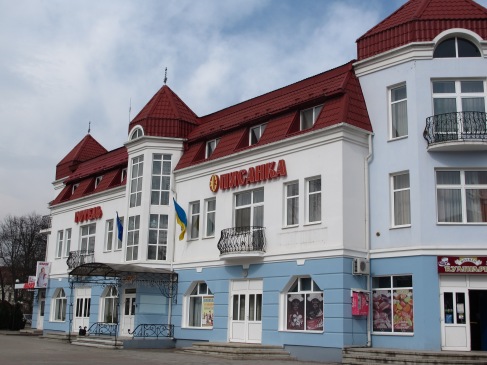
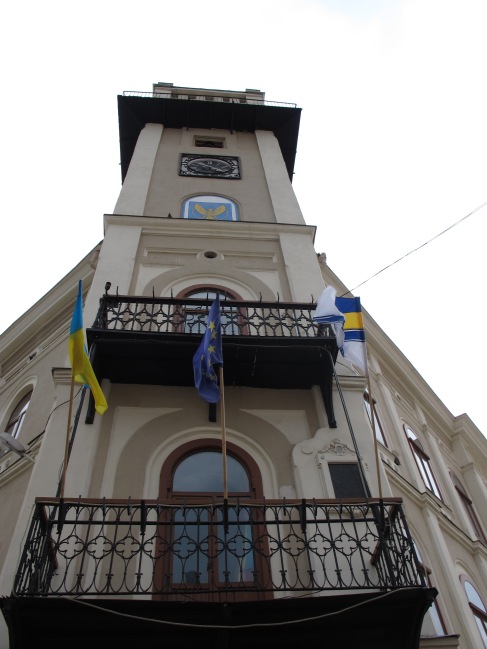



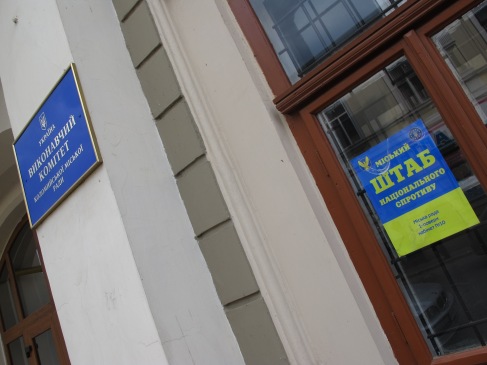


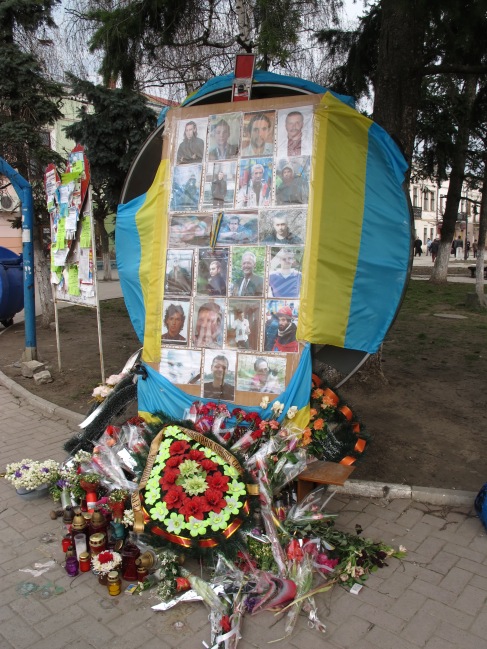
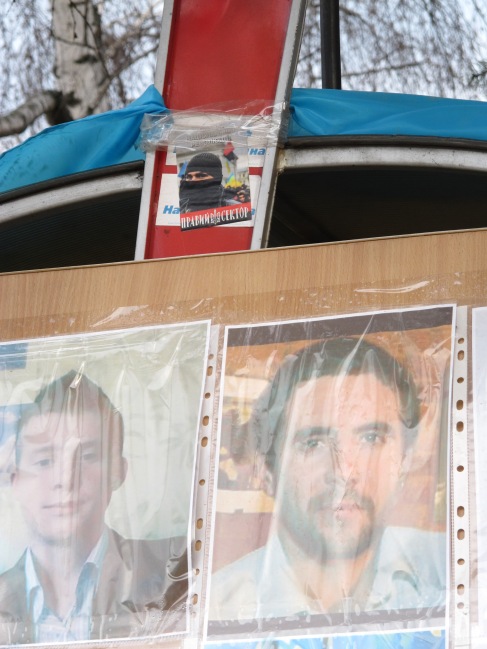
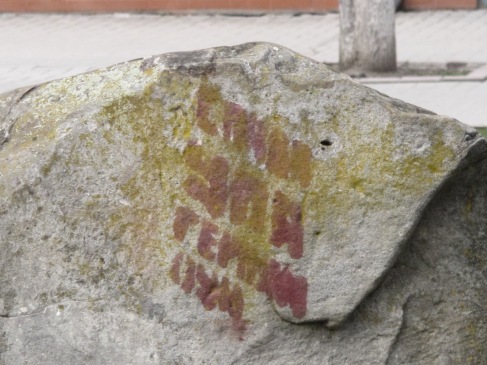

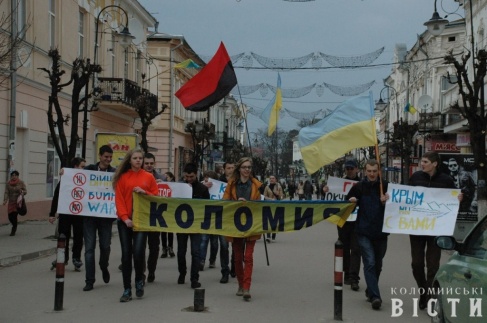
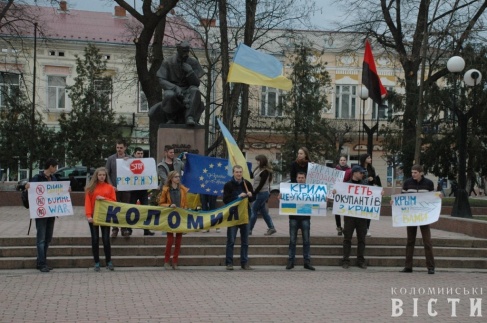

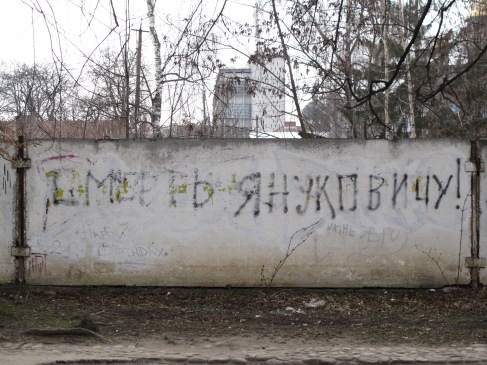

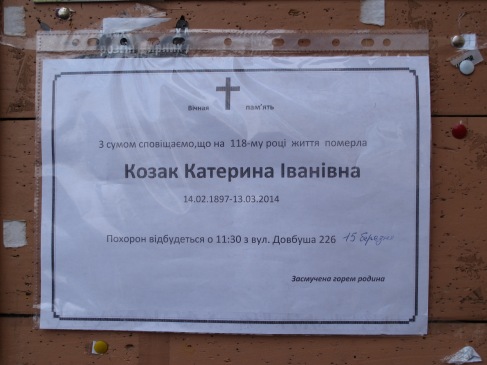
Insightful and important snapshot. Thanks for sharing!
LikeLike
Thanks for the comment, Andreas. Talking to my Ukrainian friends here, they find it difficult to understand the point of the blog. “There’s a war coming and you write about such inconsequential things”, that kind response is usual.
But then, even in war, everyday life and thus the history of the everyday continues.
LikeLike
Pingback: An Uneventful Walk to Work and Back: The Everyday in Post-Revolution Ivano-Frankivsk and a purge of nationalist imagery | Revolution, lecturing and life in western Ukraine
Pingback: Daytripping: Dolyna (Долина) – a town of two halves. And a local news update. | Revolution, lecturing and life in western Ukraine
Pingback: Feedback from the Mayor of Dolyna and the co-owner of Fabbrica | Revolution, lecturing and life in western Ukraine
I would love to know where are those Kolomeans who survived WW II. Who are they and where did they go. In the States back in 1950, there was a reunion of Kolomeans who lived in NYC. How wonderful to know where the “lost tribe” of Kolomea ended up.
LikeLike